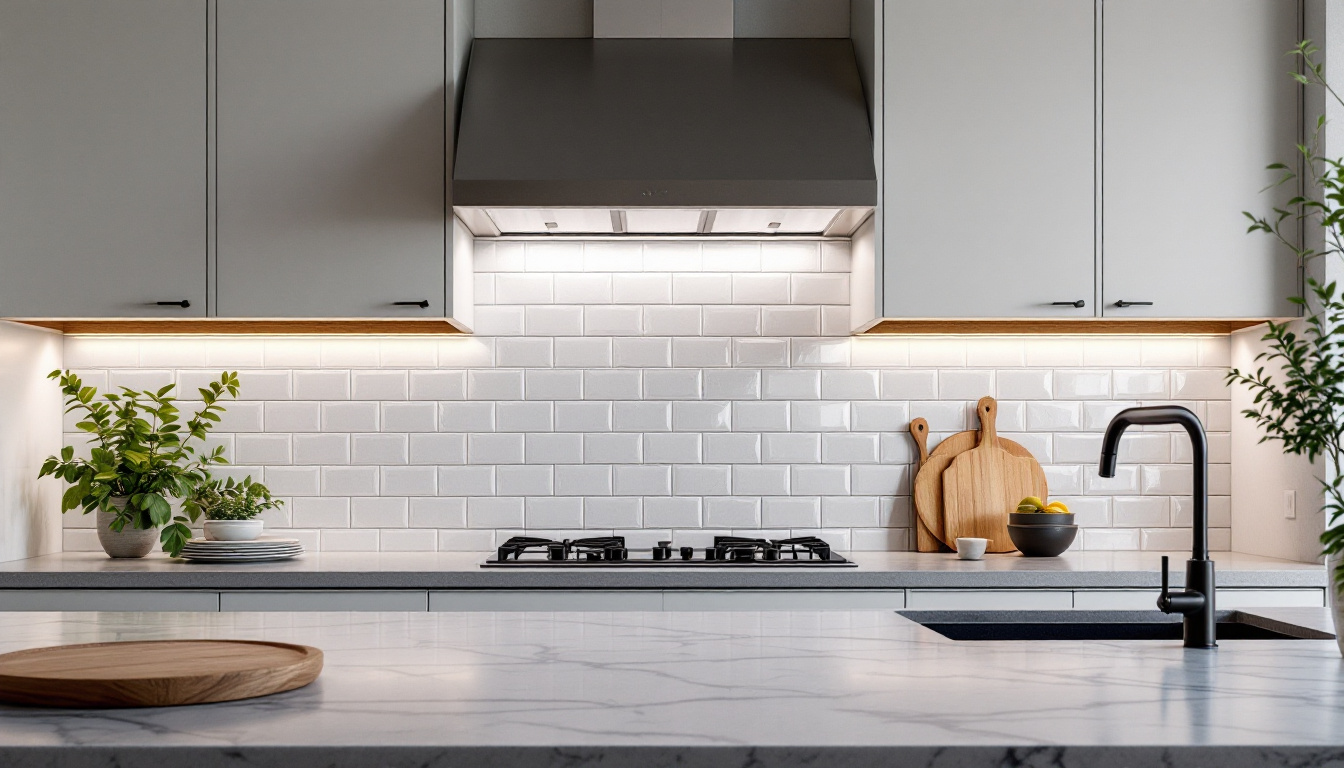
Bendable LED strip lighting has revolutionized the way lighting contractors approach both residential and commercial projects. Unlike traditional rigid fixtures, these flexible strips offer unparalleled versatility, allowing for creative installations in tight or curved spaces. Their slim profile and adaptability make them ideal for accent lighting, under-cabinet illumination, cove lighting, and even outdoor applications when properly rated.
One of the key features of bendable LED strips is their ability to conform to various shapes without compromising the integrity of the light source. This flexibility opens up design possibilities that were previously difficult or impossible to achieve with conventional lighting. Additionally, these strips often come with adhesive backing, simplifying installation and reducing labor time.
For lighting contractors, understanding the specifications and limitations of different bendable LED strips is crucial. Factors such as color temperature, lumen output, IP rating, and power consumption vary widely across products. Selecting the right strip for the job ensures optimal performance, energy efficiency, and client satisfaction.
In residential settings, bendable LED strips are frequently used for under-cabinet lighting in kitchens, accentuating architectural features, and creating ambient lighting in living spaces. Their ability to be discreetly installed makes them a favorite for enhancing home aesthetics without overwhelming the design. Furthermore, homeowners are increasingly using these strips to illuminate staircases, bookshelves, and even artwork, providing a modern touch that enhances the overall ambiance of the home.
Commercially, these strips are employed in retail displays, hospitality venues, and office environments. Their flexibility allows for dynamic lighting solutions that can highlight merchandise, create mood lighting, or improve workspace illumination. Moreover, the energy efficiency of LED technology aligns with many businesses’ sustainability goals, making bendable LED strips a smart investment. In addition, the ability to customize colors and brightness levels means that businesses can easily adapt their lighting to suit different events or seasonal promotions, ensuring that their spaces remain fresh and engaging for customers.
Another significant advantage of bendable LED strips is their longevity and low maintenance requirements. Unlike traditional lighting solutions that may require frequent bulb replacements, high-quality LED strips can last for years, significantly reducing operational costs. This durability is particularly beneficial in commercial settings where lighting is used extensively. Additionally, many modern LED strips are designed with advanced thermal management systems that help prevent overheating, further extending their lifespan and maintaining consistent light output over time.
Proper installation is critical to maximizing the lifespan and effectiveness of bendable LED strip lighting. Lighting contractors should adhere to several best practices to ensure a successful outcome.
Before installation, the mounting surface must be clean, dry, and free of dust or oils. This preparation guarantees strong adhesion and prevents premature detachment. For surfaces that are uneven or porous, additional mounting hardware or channels may be necessary to secure the strips firmly.
It’s also important to consider the thermal management of LED strips. Excess heat can degrade LED performance and lifespan. Installing strips on aluminum profiles or heat sinks can help dissipate heat effectively, especially in high-output or continuous-run applications. Furthermore, ensuring that the installation site allows for proper airflow can significantly enhance cooling, thereby prolonging the life of the LEDs. In some cases, incorporating fans or ventilation systems can be beneficial, particularly in enclosed spaces where heat accumulation is a concern.
Lighting contractors should always verify voltage compatibility and power requirements before connecting LED strips. Overloading a power supply or using an incompatible driver can result in flickering, reduced lifespan, or even electrical hazards.
When cutting and connecting strips, it’s essential to use proper connectors and follow manufacturer guidelines. Soldering may be required for custom lengths or complex configurations, and all connections should be insulated to prevent short circuits. Additionally, ensuring that the power supply is adequately rated for the total wattage of the installation is a fundamental safety step. It’s also advisable to implement a circuit breaker or fuse in the setup to provide an extra layer of protection against electrical surges, which can damage both the LED strips and the power supply.
For outdoor or damp locations, selecting LED strips with an appropriate IP rating (Ingress Protection) is necessary to prevent moisture damage. Lighting contractors should also be aware of local electrical codes and regulations governing LED installations, including grounding requirements and the use of certified components.
Moreover, understanding the environmental impact of the chosen materials is essential. Many LED strips are now available with eco-friendly certifications, which can help reduce the carbon footprint of the installation. Contractors should also consider the recyclability of the materials used, as well as the energy efficiency of the LED technology itself. By opting for products that meet sustainability standards, contractors not only comply with regulations but also contribute to a greener future, appealing to environmentally conscious clients.
Bendable LED strip lighting offers numerous design opportunities, but achieving the best results requires thoughtful planning and execution.
Choosing the correct color temperature is vital to creating the desired ambiance. Warm white (2700K–3000K) is often preferred for residential spaces to evoke comfort, while cooler temperatures (4000K–5000K) suit commercial or task-oriented environments. High color rendering index (CRI) LED strips are recommended when accurate color perception is critical, such as in retail or art display areas. Furthermore, it’s important to consider how the chosen color temperature interacts with the surrounding materials and finishes. For instance, warm tones can enhance the richness of wooden surfaces, while cooler tones may complement modern, minimalist designs. Experimenting with different color temperatures in various settings can yield surprising results, allowing designers to create unique atmospheres tailored to specific activities or moods.
Layered lighting enhances depth and functionality. Bendable LED strips can be combined with recessed fixtures, pendants, or wall sconces to create a balanced lighting scheme. Incorporating dimmers or smart controls allows for adjustable brightness and color tuning, providing flexibility to adapt lighting to different times of day or user preferences. Additionally, layering different types of lighting—ambient, task, and accent—can elevate the overall design. For example, using LED strips to highlight architectural features or artwork can draw attention to focal points while maintaining a warm, inviting atmosphere. This strategic use of light not only enhances the visual appeal but also improves the usability of the space, making it more adaptable for various activities.
One challenge with LED strips is the potential for visible hotspots where individual diodes are noticeable. Using diffusers, frosted covers, or installing strips behind translucent materials can soften the light output and create a more uniform glow. Positioning strips strategically to avoid casting harsh shadows also contributes to a polished final appearance. Moreover, considering the angle and placement of the strips can significantly impact the overall lighting effect. For instance, mounting strips at an angle or in coves can help distribute light more evenly across surfaces, reducing the likelihood of unwanted shadows. This attention to detail not only enhances the aesthetic quality of the lighting but also ensures that the functionality of the space is maximized, allowing for a more enjoyable and effective environment.
Ensuring the longevity of bendable LED strip installations requires proactive maintenance and prompt troubleshooting when issues arise.
Dust and debris accumulation can reduce light output and affect heat dissipation. Periodic cleaning with a soft, dry cloth helps maintain optimal performance. Inspecting connections and mounting integrity during routine visits can catch potential problems before they escalate.
Flickering or dimming lights may indicate power supply problems, loose connections, or degraded LED components. Lighting contractors should systematically check each segment of the strip and associated wiring. Replacing faulty drivers or connectors often restores functionality without the need for a full strip replacement.
In cases where sections of the strip fail, cutting out the defective portion and reconnecting the remaining segments can be an efficient repair method. However, such modifications should always comply with manufacturer recommendations to avoid voiding warranties.
The LED lighting industry continues to evolve rapidly, with new technologies enhancing the capabilities of bendable strips.
Smart LED strips that integrate with home automation systems enable remote control, scheduling, and dynamic lighting scenes. Voice activation and app-based interfaces provide convenience and customization, appealing to tech-savvy clients.
Emerging materials improve flexibility, heat resistance, and waterproofing, expanding the range of viable applications. Innovations in phosphor coatings and diode efficiency also contribute to brighter, more energy-efficient strips with improved color quality.
As sustainability becomes a priority, lighting contractors can expect to see more LED strips designed with recyclable components and lower environmental impact. Energy savings and reduced maintenance requirements further enhance the appeal of these products.
Bendable LED strip lighting offers lighting contractors a versatile, efficient, and aesthetically pleasing solution for a wide array of projects. By understanding product specifications, adhering to best installation practices, and employing thoughtful design strategies, contractors can deliver high-quality lighting solutions that meet client expectations and stand the test of time.
Staying informed about emerging trends and maintaining a proactive approach to maintenance ensures that these installations continue to provide value long after the initial project completion. Ultimately, mastery of bendable LED strip lighting can differentiate contractors in a competitive market, driving both customer satisfaction and business growth.
Ready to elevate your lighting projects with the versatility and efficiency of bendable LED strip lighting? Look no further than LumenWholesale, where our commitment to quality and affordability ensures you have access to the best spec-grade lighting products. Say goodbye to inflated markups and hello to wholesale prices that put you ahead of the competition. With our hassle-free bulk buying and free shipping, you can trust that you’re getting premium lighting without hidden fees. Make the smart choice for your business and explore our collection for Wholesale Lighting at the Best Value today.

Discover top-rated electrical outlets with expert insights tailored for lighting contractors.

Explore the transformative journey of outdoor sensor lights and their impact on the lighting industry.

Discover how the Maxim Countermax 89801Al can revolutionize your lighting installation projects.

Discover the essential do’s and don’ts for lighting contractors when choosing the best under cabinet lights.